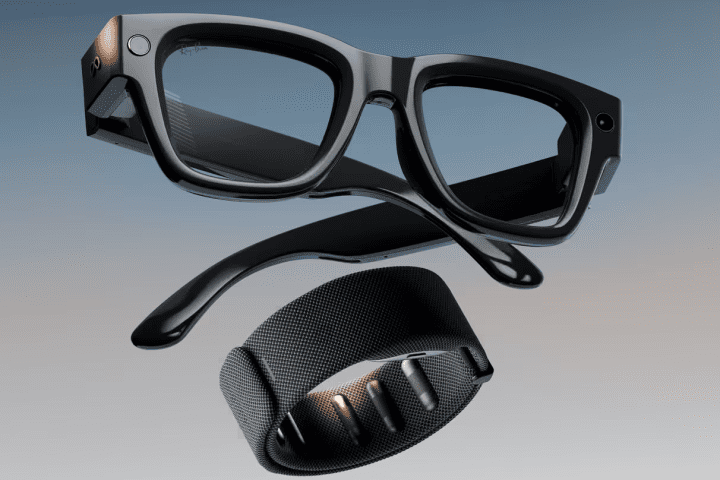The landscape of modern warfare is experiencing unprecedented transformation as artificial intelligence, Internet of Things (IoT), and robotics converge to reshape military capabilities and defense strategies worldwide. These emerging technologies are fundamentally altering how conflicts are fought, intelligence is gathered, and national security is maintained. From autonomous weapon systems and predictive analytics to connected battlefield networks and robotic reconnaissance, military forces are adapting to a new era where technological superiority often determines strategic advantage. This technological revolution in defense presents both remarkable opportunities for enhanced security and complex challenges that military leaders and policymakers must carefully navigate.
The Integration of AI in Military Operations
Artificial intelligence has become central to modern military strategy, offering capabilities that enhance decision-making speed, improve operational efficiency, and provide tactical advantages across multiple domains of warfare. Military AI applications range from automated target recognition and threat assessment to strategic planning and logistics optimization.
Machine learning algorithms analyze vast amounts of intelligence data, identifying patterns and anomalies that human analysts might miss while processing information at speeds impossible for traditional methods. These systems can correlate data from multiple sources including satellite imagery, communications intercepts, and sensor networks to provide comprehensive situational awareness for military commanders.
Predictive analytics powered by AI help military planners anticipate enemy movements, optimize resource allocation, and identify potential vulnerabilities in defense systems. These capabilities enable proactive rather than reactive military strategies, allowing forces to position assets and deploy countermeasures before threats fully materialize.
Autonomous systems guided by AI are increasingly deployed for reconnaissance, surveillance, and combat operations. Military drones equipped with AI can operate independently, make tactical decisions, and adapt to changing battlefield conditions without constant human oversight. This autonomy extends operational range while reducing risk to human personnel.
Command and control systems enhanced with AI provide military leaders with real-time analysis, automated recommendations, and decision support tools that improve response times and coordination across complex military operations. These systems process information from multiple sources to present unified operational pictures for strategic planning.
IoT and Connected Battlefield Systems
The Internet of Things is transforming military operations by creating interconnected networks of sensors, devices, and systems that provide unprecedented visibility into battlefield conditions and operational status. Military IoT implementations connect everything from individual soldier equipment to vehicle fleets and facility systems.
Soldier-worn sensors monitor health metrics, location data, and equipment status, providing commanders with real-time awareness of personnel conditions and capabilities. These connected systems can automatically call for medical assistance, track ammunition consumption, and coordinate unit movements based on individual soldier data.
Vehicle and equipment monitoring through IoT sensors provides predictive maintenance capabilities, operational status updates, and performance optimization data that improve military readiness while reducing unexpected failures during critical operations. Connected military vehicles can share tactical information and coordinate autonomous operations.
Environmental monitoring networks using IoT sensors detect chemical threats, monitor weather conditions, and provide early warning systems for various hazards that could affect military operations. These systems create comprehensive awareness of operational environments that inform tactical decisions.
Supply chain and logistics optimization benefits significantly from IoT implementation, with sensors tracking inventory levels, monitoring equipment condition, and automating resupply requests. This connectivity ensures military units maintain operational readiness while reducing logistical overhead and delays.
Communication networks enhanced with IoT capabilities provide resilient, adaptive connectivity that can maintain operations even when traditional communication infrastructure is compromised. Mesh networks of connected devices create redundant communication pathways that improve operational reliability.
Robotics in Modern Defense Applications
Military robotics has evolved from simple remote-controlled devices to sophisticated autonomous systems capable of complex operations across land, sea, air, and space domains. These robotic systems extend military capabilities while reducing human risk in dangerous environments.
Ground-based military robots perform various functions including explosive ordnance disposal, reconnaissance, logistics support, and combat operations. Advanced robotic systems can navigate complex terrain, identify threats, and execute missions with minimal human intervention while providing real-time feedback to human operators.
Aerial robotics, including both large strategic drones and small tactical units, provide surveillance, reconnaissance, and strike capabilities that extend military reach and persistence. Swarm robotics enables coordinated operations using multiple small drones that can overwhelm enemy defenses or provide distributed sensing capabilities.
Naval robotics applications include autonomous underwater vehicles for reconnaissance and mine detection, unmanned surface vessels for patrol and surveillance, and robotic systems for ship maintenance and operations. These systems extend naval capabilities while reducing crew requirements and operational costs.
Space robotics supports military satellite operations, debris removal, and potential defensive capabilities in the increasingly important space domain. Robotic systems can service satellites, repair space infrastructure, and provide capabilities that would be impossible or extremely dangerous for human astronauts.
Here are the primary ways robotics is transforming military operations:
- Enhanced reconnaissance capabilities: Robotic systems can operate in dangerous environments for extended periods, providing persistent surveillance and intelligence gathering without risking human personnel
- Precision strike operations: Armed robotic platforms enable precise targeting with reduced collateral damage and improved mission success rates
- Logistics and supply chain automation: Robotic systems can transport supplies, maintain equipment, and support operations in contested environments where human logistics would be vulnerable
- Force multiplication effects: Small numbers of human operators can control multiple robotic systems, effectively multiplying force capabilities without proportional increases in personnel
- Hazardous environment operations: Robots can operate in chemically contaminated, radioactive, or otherwise dangerous environments where human survival would be impossible
- Persistent monitoring and patrol: Robotic systems can maintain surveillance and patrol operations continuously without fatigue or shift changes
- Rapid deployment capabilities: Lightweight robotic systems can be quickly deployed to new operational areas and begin operations immediately upon arrival
Strategic Implications and Doctrine Evolution
The integration of emerging technologies is forcing fundamental changes in military doctrine and strategic thinking. Traditional concepts of warfare based on human-centered operations are evolving to incorporate human-machine teaming and autonomous system capabilities.
Network-centric warfare concepts emphasize connectivity and information sharing across all levels of military operations. This approach leverages IoT and AI technologies to create shared situational awareness and enable distributed decision-making that improves operational effectiveness and responsiveness.
Multi-domain operations require coordination across land, sea, air, space, and cyberspace domains simultaneously. Emerging technologies enable this coordination by providing real-time data sharing and automated coordination between different operational domains and units.
Speed of decision-making has become increasingly important as technological capabilities enable rapid changes in battlefield conditions. AI-assisted decision support systems help commanders process information and make decisions at the speed required for modern conflict.
Asymmetric warfare considerations become more complex as emerging technologies become available to both state and non-state actors. Military planners must consider how adversaries might use commercial technologies for military purposes and develop countermeasures accordingly.
Ethical and Legal Challenges
The deployment of emerging technologies in military applications raises significant ethical questions about autonomous weapons, civilian protection, and the conduct of warfare. International humanitarian law and rules of engagement must evolve to address autonomous systems that can make life-and-death decisions without direct human control.
Accountability and responsibility become complex issues when autonomous systems cause unintended consequences or make decisions that result in civilian casualties. Military and political leaders must establish clear protocols for responsibility and oversight of autonomous military systems.
Arms race concerns emerge as nations compete to develop and deploy advanced military technologies. The rapid pace of technological development creates pressure to deploy systems quickly, potentially without adequate testing or consideration of long-term consequences.
Proliferation risks exist as military technologies become commercialized and potentially available to non-state actors or adversarial nations. Export controls and technology transfer restrictions become increasingly important for maintaining strategic advantages.
Cybersecurity and Vulnerability Considerations
The increased connectivity and complexity of modern military systems create new vulnerabilities that adversaries can exploit through cyber attacks. Military networks must be designed with robust cybersecurity measures that can protect against sophisticated threats while maintaining operational effectiveness.
Here’s how military organizations are addressing cybersecurity challenges in the age of emerging technologies:
- Implement zero-trust security architectures: Military networks are adopting security models that verify every device and user before granting access, regardless of their location within the network perimeter.
- Develop AI-powered threat detection: Machine learning systems monitor network traffic and system behavior to identify potential cyber threats and respond automatically to suspicious activities.
- Establish secure communication protocols: Encrypted communication systems ensure that data transmission between connected military systems remains secure even if intercepted by adversaries.
- Create network segmentation and isolation: Critical military systems are isolated from less secure networks to prevent lateral movement of cyber threats throughout military infrastructure.
- Implement regular security updates and patches: Automated systems ensure that military technology receives timely security updates to address newly discovered vulnerabilities.
- Conduct continuous penetration testing: Regular testing of military systems helps identify vulnerabilities before adversaries can exploit them in actual conflicts.
- Develop cyber resilience capabilities: Military systems are designed to continue operating even when under cyber attack, with backup systems and alternative communication methods available.
International Competition and Arms Development
The global competition for military technological superiority is driving unprecedented investment in research and development of AI, IoT, and robotics applications. Major powers including the United States, China, and Russia are investing heavily in these technologies to maintain or achieve strategic advantages.
Technology transfer and espionage concerns have led to increased restrictions on international collaboration and export controls on advanced military technologies. Nations are carefully protecting their technological advantages while trying to gain access to adversaries’ capabilities.
Standardization and interoperability challenges arise as allied nations must coordinate their technological development to ensure compatibility during joint operations. NATO and other alliance structures are working to establish common standards for emerging military technologies.
Future Trends and Developments
The evolution of military technology will likely accelerate as AI capabilities improve, IoT networks become more sophisticated, and robotic systems achieve greater autonomy. Quantum computing may eventually provide breakthrough capabilities in encryption, communication, and processing power for military applications.
Human-machine integration will become more sophisticated, with brain-computer interfaces and augmented reality systems enhancing human capabilities while maintaining human control over critical decisions. This integration aims to combine human judgment with machine speed and precision.
Space-based military capabilities will expand as launch costs decrease and technology miniaturization continues. Satellite networks, space-based sensors, and potential defensive systems will become increasingly important for national security.
Hypersonic weapons and advanced missile defense systems represent areas of intense development that will likely influence future military balance and strategic calculations. These systems combine multiple emerging technologies to create new capabilities and challenges.
Conclusion
The integration of AI, IoT, and robotics is fundamentally transforming warfare and defense strategy, creating opportunities for enhanced military capabilities while presenting new challenges for security, ethics, and international stability. Military organizations worldwide must adapt their doctrines, training, and operational procedures to effectively leverage these technologies while managing associated risks.
Success in this technological transformation requires careful balance between innovation and security, human oversight and machine autonomy, and technological advancement and ethical considerations. Military leaders must invest in both technology development and the human capital needed to effectively employ these advanced systems.
The future of warfare will likely be characterized by increasing human-machine collaboration, network-centric operations, and multi-domain coordination enabled by emerging technologies. Nations that successfully integrate these capabilities while addressing ethical and security concerns will likely maintain strategic advantages in an increasingly complex global security environment.
As these technologies continue evolving, ongoing dialogue between military professionals, technologists, ethicists, and policymakers will be essential for ensuring that technological advancement serves broader security objectives while maintaining humanitarian principles and international stability.












